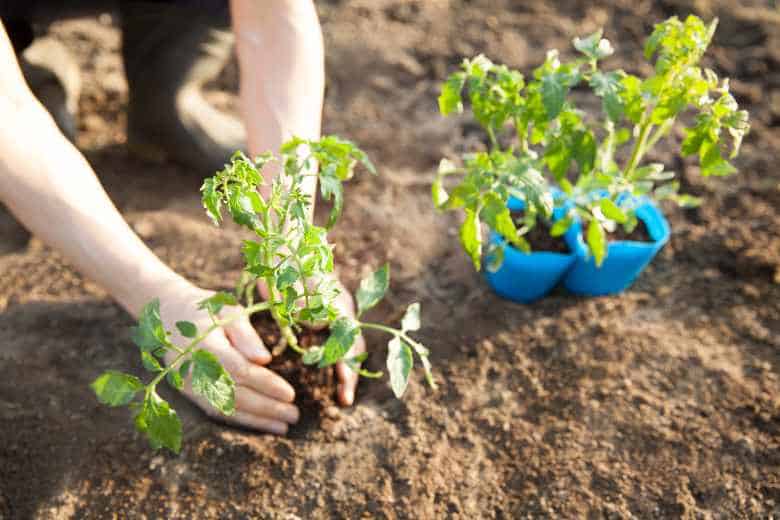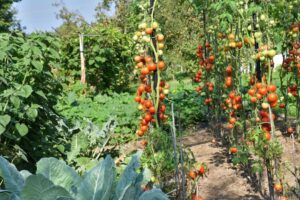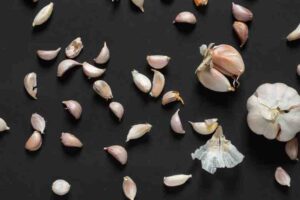
Growing your tomatoes is hugely rewarding, but it’s important to start them at the right time of year for your zone. In Tennessee, which spans USDA Hardiness Zones 6b through 8a, there’s a fairly short but defined window for successful tomato planting. Follow these tips for determining when tomatoes should go in the ground in different parts of the state.
Planting Dates Vary Across Tennessee
As a rule of thumb, Tennessee lies within a planting zone spanning mid-March through early June. However, the timing varies depending on your location within the state. In the far west and southwest regions of Tennessee (Zone 8a), you can start tomatoes as early as mid-March.
Ideally, wait until nighttime temperatures are consistently above 50 degrees Fahrenheit.
Moving eastward through Zones 7b and 7a, aim for late March through mid-April. The Tennessee River Valley and Cumberland Plateau fall into these transition zones.
Be wary of potential late frost dates, which can be as late as mid-April.
For northern and eastern Tennessee in Zones 6b and 6a, the ideal tomato planting window runs from mid-April through early May. These cooler areas face the highest frost risk, so delay planting until nighttime lows are reliably above freezing.
Even then, be prepared to cover or bring in young plants if a late frost is predicted.
Choosing the Right Varieties
When selecting tomato varieties, opt for early, mid-season, or late-maturing types suited to your growing zone. Early varieties planted in Zone 8a might be produced before summer’s peak heat arrives.
Mid-season types suit Zones 7a-7b well. Late or determinate tomatoes planted in Zone 6b may still have time to crop before fall frost.
Heirloom and hybrid tomatoes behave differently, so consider your preferred variety when scheduling your planting dates. Heirlooms often set fruit over a longer period but are less disease-resistant.
Hybrids tend to concentrate ripening but withstand pests and weather stresses better. Match the varieties to your site and skill level.
The Planting Process: Steps for Success
Once nighttime temperatures are safely above 50 degrees, follow these steps for successful tomato planting:
Step 1: Prepare the soil several weeks beforehand by tilling in compost, aged manure or other organic matter. Tennessee soils often benefit from pH adjustments as well.
Step 2: Start seeds indoors 4-6 weeks before the last expected spring frost date. Provide grow lights, heat mats, and sufficient humidity for healthy seedlings.
Step 3: Hardened off transplants by acclimating them to outdoor conditions for 7-10 days before planting. Gradually increase sun exposure and withstand variable temperatures.
Step 4: Pick a spot in full sun, at least 5-6 hours of direct light daily. Amend heavy clay soils with compost to ensure good drainage.
Step 5: Use a trowel or shovel to dig holes twice the width of each transplant’s root ball and slightly shallower.
Step 6: Remove seedlings from their pots or cells carefully without damaging fragile roots. Tease them out gently if pot-bound.
Step 7: Place transplants in the holes and backfill with native soil, pressing firmly to eliminate air pockets. Water thoroughly once planted.
Step 8: Place tomato cages, stakes, or another support structure before planting or soon after to avoid disturbing roots. Tie vines as they grow.
Step 9: Apply a 2-3 inch layer of mulch such as shredded leaves, grass clippings, or straw to maintain even soil moisture and suppress weeds.
Step 10: Monitor new transplants and water regularly (1-2 inches per week) until established, then as needed to prevent drought stress.
Precautions for Tomato Growing in Tennessee
While timing is crucial, also watch for these potential pitfalls of Tennessee’s variable climate:
- Late frosts in spring or early fall can damage or kill tender tomato plants. Be ready to cover or move plants if frost threatens.
- Torrential summer downpours may spread disease between susceptible varieties grown too close together. Allow for airflow with proper spacing.
- Weeks of 90-degree or higher heat can cause blossom drop or fruit sunscald without adequate watering, mulching, and nutrition.
- Pests like hornworms, blister beetles, and early blights favor wet or humid conditions. Fungal diseases also spread rapidly in such weather.
- Drought stress during heat waves makes plants more vulnerable to infection, so maintain consistent soil moisture without overwatering.
FAQs About When to Plant Tomatoes in Tn (Tennessee)
When is the best time to plant tomatoes in Tennessee?
Answer: The best time to plant tomatoes in Tennessee is typically in late April or early May after the last frost has passed.
How deep should I plant my tomatoes?
Answer: Tomatoes should be planted at a depth of two to three inches in Tennessee’s soil.
Are there any special considerations for growing tomatoes in Tennessee?
Answer: Depending on your local climate, some tomato varieties may need to be staked or supported to ensure steady growth. It is also recommended to mulch around your tomato plants to help retain soil moisture and suppress weeds.
Conclusion
In Tennessee, tomatoes are usually planted in late March or early April. If you are planting early, you should wait until the last frost has passed and the soil has warmed to at least 55 degrees. Planting too early may result in lower yields and poor fruit quality. So it is best to wait until the optimal time to ensure a healthy harvest.
With careful attention to Tennessee’s planting windows and growing conditions, you’ll be rewarded with an abundant tomato harvest to enjoy all summer long. Following best practices helps your tomato plants thrive despite the variable climate zones across the Volunteer State. Happy planting!






One Comment